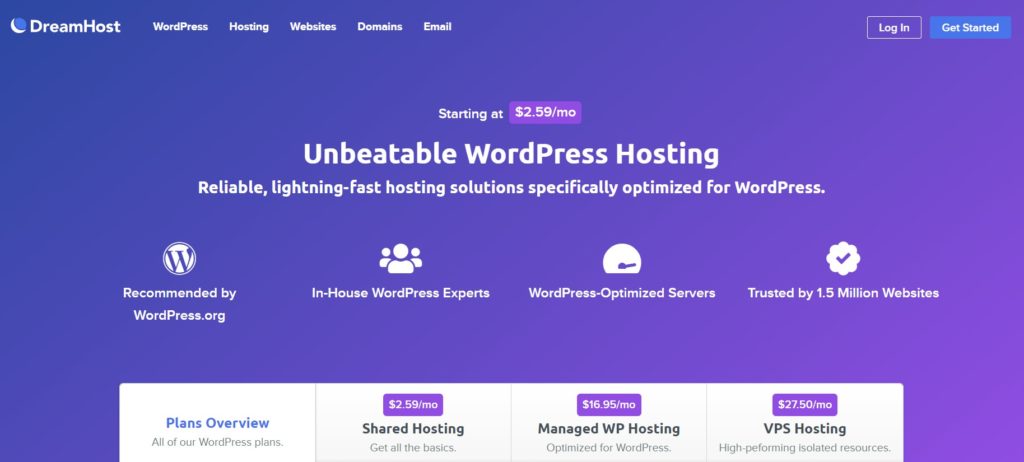How to Start a Blog, really? Have you been planning to start a blog for some time now but don’t know where to begin? This guide will teach you how to get all the technical elements sorted out within twenty minutes. But first: why would you actually start a blog in 2021? Does a blog still make sense?
Blogging is no longer just a hobby but also a lifestyle. Successful bloggers enjoy an amazingly comfortable lifestyle, with “freedom” being the keyword. Yet, at the same time, this is a kind of work that is never finished. LoreleiWeb.com is over 15 years old (!), yet I am constantly working on my blog: writing new articles, promoting, and engaging in social media. Since I love what I do, it doesn’t feel like I am working through it.

People often ask me how does it work, running a blog? They ask questions like, “How do you start a blog? What do you put on it? How often do you write a new post?” I can’t even always answer since it all comes naturally to me now.
But of course, this whole process of starting a blog had (and still has) many puzzles that have to fit together in order to create an interesting, popular blog that is worth reading and is profitable enough to replace your day job.
Today, in this extensive guide, I will share all my knowledge with everyone who wants to begin blogging, but don’t know how to get started.
→ Already have a blog? Read here about how I went from just 80 to over 80,000 readers on my blog.
Creating a blog can be the first step towards extra income and a new direction in your career. But can you do it all yourself if you are not tech-savvy or have any prior experience? Absolutely. And no, making a blog is not complicated.
Are you not a tech kid? That is no longer a reason to postpone starting your blog. If you follow these steps, you can your blog launch within 20 minutes.
…Or even within five minutes, if you want to start a free blog.
Creating a free blog on the wordpress.com or blogger.com website is the fastest option if you don’t intend to spend a dime. You can start a free blog within five minutes – all you have to do is enter some personal details and choose a layout. Within minutes, you can start writing and publishing your ideas.
However, starting a blog on a free blog platform is not ideal; there are a few disadvantages. Your blog will not have a friendly URL like LoreleiWeb.com. The name of the blog platform remains as a part of your sub-domain. So you will have a URL like:
- yourblog.wordpress.com
- yourblog.blogger.com
This is less than professional.
You also have a lot less control over your blog. For example, you cannot decide for yourself which ads are displayed with your articles, nor can you choose how to monetize your blog. There is also a limited choice of blog designs (WordPress themes or Blogger templates); moreover, you cannot install plugins.

Ready to start a professional blog?
How to start a blog, let alone a professional one? Follow these ten steps. It will only take you 20 minutes and cost you just a few dollars, yet the result will be worth it.
Starting a Blog: Step 1 – Choose a Domain
The question “how to start a blog” begins, most of the time, with the technical stuff. The domain is the URL under which your blog can be found – in my case, loreleiweb.com. The cost of a domain name are minimal. For a few dollars, you have your own URL for a year. If you also purchase a hosting package (see step 2) from the same provider, the domain is often included at no cost.
What if you want to start a blog but are not entirely sure of the main subject? Then choose a URL with which you can go in many ways, such as your own name or a brand. Under your own name, you can change the subject a hundred times without buying a new domain again and losing visitors. Here you can check which domains are still not registered.
Looking for a cheap domain name? Get yours on NameCheap
Please note: it may take a few hours before your chosen domain is registered, but you can get started with the next steps in the meantime while you wait.
How to Start a Blog: Step 2 – Choose a Hosting Company
If you want to start a blog, you need a physical place where you can store the articles, photos, and other files of your blog. In other words, disk space on the internet, something like a cloud, only with more control.
This is where hosting plans come into the picture. Someone has already thought it all out and created various hosting packages for different needs (depending on the blog’s size and popularity).
You basically rent a couple of gigabytes on a hosting company’s server. (A server is a computer that is connected to the internet day and night.) This way, visitors on your blog can always read your articles, 24/7. A hosting package costs anywhere from $1 to $1000 per month, depending on the hosting company you choose. Not all hosting companies are equally good, and the cheapest option is not always the best.
What are the best web hosting companies?
For me, one of the most important criteria for choosing a hosting company is speed. That’s why I always recommend finding the fastest web hosting provider. I host all my blogs across different accounts, yet all with the same provider, Dreamhost.com
They provide the best quality/price ratio, and you get a free domain, free SSL certificate, and free WhoisGuard (anonymity) with every purchase. In my view, Dreamhost.com is the best option (follow this link for the current promotion – 59% off any hosting web package).
So far, for the past seven years, I have had only good experiences with them: they are not expensive, their servers operate very fast, and they have an outstanding, professional support team. You can pay just $2 per month or get a discount if you pay annually in advance. It really is a great value for your money.
UPDATE: as of 2019, I moved all my blogs to Dreamhost.com – and this was the best decision I could make. I got a free SSL certificate for all my domains for the life of my hosting with them, which saves me over $100 annually. Also, their servers are so smooth and fast, so for 2020 and beyond, I definitely recommend DreamHost.
Special Coupon: Get 59% OFF DreamHost!
Starting a Blog: Step 3 – Install WordPress on your Domain
If you start a blog, you also need a Content Management System (CMS), or a program that allows you to publish articles on a pretty layout. The easiest and most used CMS for blogging is WordPress (read here to find out why). Call me old-fashioned, but I swear by WordPress. It has plenty of functionalities and is also ideal for beginners, as the interface is very intuitive. Through WordPress plugins, you can completely customize your blog to practically anything, from a photography portfolio to an e-shop.
With DreamPress, you can have WordPress installed automatically. Once your domain is registered, you can log in to your hosting account and press the ‘Install WordPress’ option. Simply choose a username and password for your blog, and the rest will be done automatically for you.
Starting a Blog: Step 4 – Design
Today’s key factors are the design (determined by a WordPress theme) and site functionality (determined by WordPress plugins). People will not read your crappy posts just because the background is pretty. It’s the other way around – they will not even begin reading if the layout is crappy.
Whether you like it or not, that is the reality, and the only way to deal with it is to make sure you have a top-notch (professionally designed and coded!) WordPress theme. This means no layout flaws, 100% cross-browser compatible, and no coding errors.
Choose a design that resonates with your blog theme and niche, get inspired by browsing other blogs, and definitely invest a few dollars in a professional WordPress theme. It will save you so much work, effort, and pain – the energy that could have otherwise been invested in writing new blog posts. After 15 years of online experience, I can definitely consider myself tech-savvy, yet I always buy a premium design.
I know that I am saving myself the hassle of working through coding errors and layout mishaps that seem to always come with free themes in the long run. Many years ago, I purchased a lifetime membership at ElegantThemes.com (they are the best, really!). With unlimited access to all their 90+ WordPress themes, I never needed to buy another design again.

They also have their famous Divi theme (my review here), which is a fully customizable drag-and-drop interface, ideal for beginners.
Other theme providers to consider:
Starting a Blog: Step 5 – Plugins
As I have already mentioned in step 4, functionality today cannot be overestimated. When you visit a website, you expect it to load fast, be free of errors, and have intuitive navigation.
Think of virtually any functionality you want – there is a plugin for it in the WordPress repository. Unlike blog designs, where I strongly recommend going premium, plugins are an area you can easily save on. Unless you look for something extraordinary, you will do well with just:
- All in One SEO (free version) – a WordPress plugin that will optimize your blog for search engines, make sure you are visible to search bots, and generate a sitemap.
- JetPack (free version) – while the premium version is very tempting to get, there are pretty extensive features and stats in the free version, including “lazy load” for images and free CDN image caching. This plugin comes from the creators of WordPress itself and is therefore very reliable and stable.
- Akismet – filter spam comments. Might not be an issue if you just got started, but once spam hits your blog (and it always does…), you will be unable to run your blog without it. Again, the free version is more than sufficient.
- WP Super Cache – once you start growing just a little bit, you quickly outgrow the specs in your low-tier hosting account, and after having a few spikes in traffic that may throw your website offline, your hosting company will politely yet determinedly offer you an upgrade. This has nothing to do with the overuse of bandwidth or running out of physical disk space. It’s all about way too many PHP queries that raise CPU usage. Prevent the problem by caching your website. This will dramatically lower your CPU and prevent the server from overheating.
How To Start a Blog: Step 6 – Choose a Niche
Define your target group or find a niche. Before you start a blog, carefully consider who you are writing about and what about it. Make sure you do not just publish random posts on different topics that you like, but try to stick to one distinctive niche (even if it’s a general topic).
Read also: How To Find A Profitable Niche
How To Start a Blog: Step 7 – Writing Content
Though this is the most obvious step, it is also the hardest.
You will soon find that in practice, writing isn’t as easy as it seemed in theory. This is why many acclaimed bloggers, once their website becomes famous in the blogging sphere, outsource content and have in-house writers writing for them.
Why?
Because it’s hard.
It’s time-consuming, and if you are not a native English speaker, it’s even more laborious, going through the grammar repeatedly. When you begin writing, start with patience. Don’t look at your fellow bloggers who have been busy for years.
You will have to work hard to become a prominent blogger and influencer, just don’t rush.

Remember to add individuality. With 1000+ blogs appearing every day, it becomes increasingly difficult to stand out and distinguish yourself. Adding a personal touch to your blogging can help a lot. Don’t be afraid to be unique. Copy other’s success strategies, marketing techniques, copywriting tips, and SEO methods, but add your personality, unique style, and character.
Blog frequently. Blogging every day is not necessary, although it does result in greater and faster growth. In any case, ensure some consistency. Do not expect miracles if you post days in a row and then suddenly stop for a month. Your visitors want to know what they can expect from you and when. I previously wrote an extensive article about blogging frequency.
Just place unique content, even if you have a desperate writer’s block. You and your blog will become unique when you publish unique content, but Google will also appreciate and reward you for this original content.
This way, you will generate more traffic from the search engines. Just a side note: unique content is not equal to unique topics. Coming up with unique topics is no longer possible in today’s fathomless sea of websites. Make sure you have an original approach to your main topic, but in any case, copying texts from other blogs is a no go.
If you really want to run a blog, but the idea of content creation and writing blog posts scares you, just do what everyone else is doing: outsource. There are plenty of places online where you can outsource content creation. However, from personal experience, I can tell you that the vast majority of them are a waste of time and money.
Websites that offer articles for $1-10 apiece are often either written by non-English speakers or spun (software re-written) to the point they pass Copyscape, yet impossible to read by a human. On the other hand, there are plenty of talented writers out there that offer high quality, well-researched, custom-written blog posts, and copywriting, but be prepared to fork out a little money for those services.
For many years, when needed, toptut.com has been outsourcing content creation from Fiverr, a well-known guest blogging service that charges a very reasonable price of $35 per 500 words. This means a typical 1500-words article would only cost us around $100, which is approximately 1/3 of what others are charging. Native UK/US students write all the articles, so you get a very good result for your money.
Read also: Tested: Automatic AI-powered content creation for $0.25 per article
Alternatively, you can always visit Fiverr.com to help you out (follow this link for 20% off your first purchase). You can outsource content creation, logo creation, article spinning, or writing. Price, in most cases, is adequate for the quality. So if you pay $250-$350 for a big blog post, you can expect it to be brilliant, but don’t expect the same outcome from a $10 blog post, even if the “writer” promises you everything.
How to Start a Blog: Step 8 – SEO

On our blog, you will find dozens upon dozens of posts dedicated to search engine optimization (SEO). Why? Because it’s one of the most important factors if you want to make sure your blog is visible and enjoy plenty of “free” traffic coming your way from search engines like Google.
SEO is an art; it takes time to do it right, and since search algorithms are constantly changing, it is worth your time to invest a lot of effort into optimizing your blog for Search Engines. Since this topic is way too broad, allow me to suggest some of my previously written blog posts about SEO, where you can explore the strategy in-depth:
Starting a Blog: Step 9 – Monetizing
I guess no one would deny that money is important. Even if you are blogging out of purely altruistic motives and want to share your ideas and beliefs with the world or make the world a better place, getting some kind of monetary reward for your time and effort shouldn’t be shameful.

After all, you do pay for your hosting, domain, and maybe even newsletter software. You invest your time and creativity, so why not be rewarded? Once your blog becomes successful and grows, revenue will become a naturally integrated part of the website.
People will email you asking for advertising space. Once popular, you will get dozens of emails offering free guest blog posts from writers who want to be “seen” publishing on top blogs.
But, do not become too commercial.
Unless your blog is essentially business-oriented, overwhelming visitors with way too many ads, banners, paid material, and sponsored products will result in people leaving your blog. It’s a fine line that everyone has to find – between monetization and quality content.
On the pages of lizs3.sg-host.com, for example, you cannot even see how we make money. I often get asked, “How is the blog making money, if there is no advertising on it?” And that is a good sign.
Advertising should be so subtly woven into the website that an average visitor cannot be seen and, therefore, won’t distract readers from the actual content.
My final advice on how to start a blog.
If you want to write and want to share your knowledge, experience, and ideas… Just start. The rest will follow automatically. Make sure people have a reason to view more than one page on your blog. Many bloggers get the most traffic from social media.
Follow me on Instagram
The consequence is that people click on a link, read, and leave immediately. Undoubtedly, it’s not the most quality traffic and also bad for your overall bounce rate. Give visitors a reason to look further and explore more about your website.
How? For example, by linking to other blog posts from your content (as you see me do in this very article), by showing relevant articles at the bottom or promoting your most popular blog posts throughout your content.
Make sure you interact with your followers via Twitter and Facebook and build a relationship with your readership. Do not focus on statistics–at least not every day. It’s a good idea to look at your Google Analytics figures to improve yourself and see your strong and weak spots, but if you are busy with numbers often, you can quickly get depressed. It will always look like you are not growing fast enough.
Focus on quality and the rest will follow. The bottom line is, starting a blog is a good idea at any time. It’s never too late.
Do you have any additional blog tips for beginners? Leave them below in the comments!
How To Start A Blog: FAQ
How do I start a blog for free?
Looking for some free blog sites to help you share your writing with the world? If you just want to share updates with your family and friends or you want to start a blog and create a wider audience, we’ve put together ten great sites where you can start a free blog. Here are the 10 Best Free Blogging Sites to Build Your Blog for Free in 2021:
WordPress.com
Wix.com
Weebly.com
Medium.com
Blogger.com
Ghost.com
Tumblr.com
Joomla.com
Yola.com
How do bloggers get paid?
Generally speaking, by providing something of value in return for money. That means that before you can start making money on your blog, it’s got to be a valuable place on the internet. The type of value that your blog has to give may vary in how you choose to monetize your blog.
There are five key ways bloggers can make money: advertising, affiliate marketing, sponsored content, goods, and services.
What is the best way to get free traffic to a blog?
1. Advertise. This one is very obvious, but it will drive instant and targeted traffic.
2. Get social and engage on social media
3. Write Headlines that will serve as clickbaits
4. Optimize your SEO.
5. Target long-tail keywords for easier SEO results.
6. Start guest posting on other blogs.
What is the difference between a blog and a website?
Blogs are a website type. The only real distinction between blogs and other websites is that blogs are regularly updated with new material presented in reverse chronological order (more recent posts first).
Typical websites are of a static type, where content is arranged on pages and are not regularly updated. At the same time, the blog is complicated and is usually updated more frequently. Some bloggers post several new articles a day.
Blogs can be part of a broader website. Businesses also have a blog section where they frequently produce content to inform and educate their clients.
You can use WordPress to create either a website or a blog, which is why many business owners are using WordPress to develop their small business website.
Simply put, all blogs may be a website or part of a website. Not all websites can be called blogs, however.
How much does it cost to start a blog?
Depending on your set point, you can start a blog absolutely free, on any web 2.0 platform and a subdomain. However, if you aim for 100% uptime, lightning-fast speed, premium design and top-level domain name – the price of starting a blog can start from low $XX and go up to $XXX. Typically, a Domain Name costs around $2–$15 per year, and a good hosting such as Dreamhost costs around $3–$15 per month.
Data analytics expert. As an analyst and project manager, I have proven to be a strong leader and team player in maintaining a suitable workspace for workers and industries in the oil and gas sector.
By taking into account various factors, with the assistance of state of the art technologies and the utilization of Big Data Analytics.
This includes considering various aspects like volume, velocity, variety, veracity, value together with complexity.
With the recent advent of data recording sensors in exploration, drilling, and production operations, oil and gas industry has become a massive data intensive industry.







